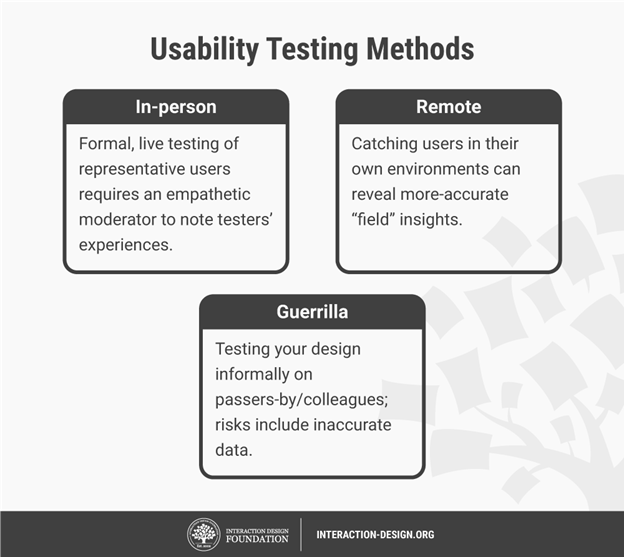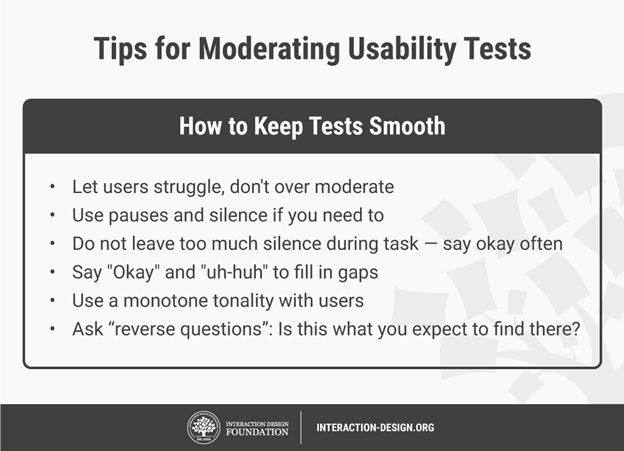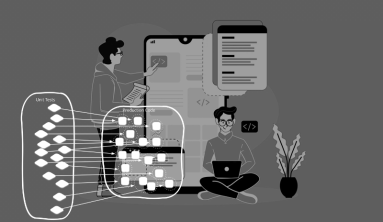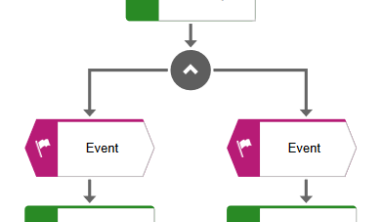Usability testing is the practice of testing how easy a design is to use with a group of representative users. It usually involves observing users as they attempt to complete tasks and can be done for different types of designs. It is often conducted repeatedly, from early development until a product’s release.
“It’s about catching customers in the act, and providing highly relevant and highly contextual information.”
— Paul Maritz, CEO at Pivotal
Usability Testing Leads to the Right Products
Through usability testing, you can find design flaws you might otherwise overlook. When you watch how test users behave while they try to execute tasks, you’ll get vital insights into how well your design/product works. Then, you can leverage these insights to make improvements. Whenever you run a usability test, your chief objectives are to:
1) Determine whether testers can complete tasks successfully and independently.
2) Assess their performance and mental state as they try to complete tasks, to see how well your design works.
3) See how much users enjoy using it.
4) Identify problems and their severity.
5) Find solutions.

While usability tests can help you create the right products, they shouldn’t be the only tool in your UX research toolbox. If you just focus on the evaluation activity, you won’t improve the usability overall.

There are different methods for usability testing. Which one you choose depends on your product and where you are in your design process.
Usability Testing is an Iterative Process
To make usability testing work best, you should:
1) Plan –
a. Define what you want to test. Ask yourself questions about your design/product. What aspect/s of it do you want to test? You can make a hypothesis from each answer. With a clear hypothesis, you’ll have the exact aspect you want to test.
b. Decide how to conduct your test – e.g., remotely. Define the scope of what to test (e.g., navigation) and stick to it throughout the test. When you test aspects individually, you’ll eventually build a broader view of how well your design works overall.
2) Set user tasks –
a. Prioritize the most important tasks to meet objectives (e.g., complete checkout), no more than 5 per participant. Allow a 60-minute timeframe.
b. Clearly define tasks with realistic goals.
c. Create scenarios where users can try to use the design naturally. That means you let them get to grips with it on their own rather than direct them with instructions.
3) Recruit testers – Know who your users are as a target group. Use screening questionnaires (e.g., Google Forms) to find suitable candidates. You can advertise and offer incentives. You can also find contacts through community groups, etc. If you test with only 5 users, you can still reveal 85% of core issues.
4) Facilitate/Moderate testing – Set up testing in a suitable environment. Observe and interview users. Notice issues. See if users fail to see things, go in the wrong direction or misinterpret rules. When you record usability sessions, you can more easily count the number of times users become confused. Ask users to think aloud and tell you how they feel as they go through the test. From this, you can check whether your designer’s mental model is accurate: Does what you think users can do with your design match what these test users show?
If you choose remote testing, you can moderate via Google Hangouts, etc., or use unmoderated testing. You can use this software to carry out remote moderated and unmoderated testing and have the benefit of tools such as heatmaps.

Keep usability tests smooth by following these guidelines.
1) Assess user behavior – Use these metrics:
Quantitative – time users take on a task, success and failure rates, effort (how many clicks users take, instances of confusion, etc.)
Qualitative – users’ stress responses (facial reactions, body-language changes, squinting, etc.), subjective satisfaction (which they give through a post-test questionnaire) and perceived level of effort/difficulty
2) Create a test report – Review video footage and analyzed data. Clearly define design issues and best practices. Involve the entire team.
Overall, you should test not your design’s functionality, but users’ experience of it. Some users may be too polite to be entirely honest about problems. So, always examine all data carefully.
Source: interaction-design
Learn More about Usability Testing
Take our course on usability testing: https://www.interaction-design.org/courses/conducting-usability-testing
Here’s a quick-fire method to conduct usability testing: https://uxdesign.cc/rapid-usability-testing-for-designers-b429a9b1e2c
See some real-world examples of usability testing: https://generalassemb.ly/design/user-experience-design/usability-testing
Take some helpful usability testing tips: https://www.smashingmagazine.com/2018/03/guide-user-testing/






